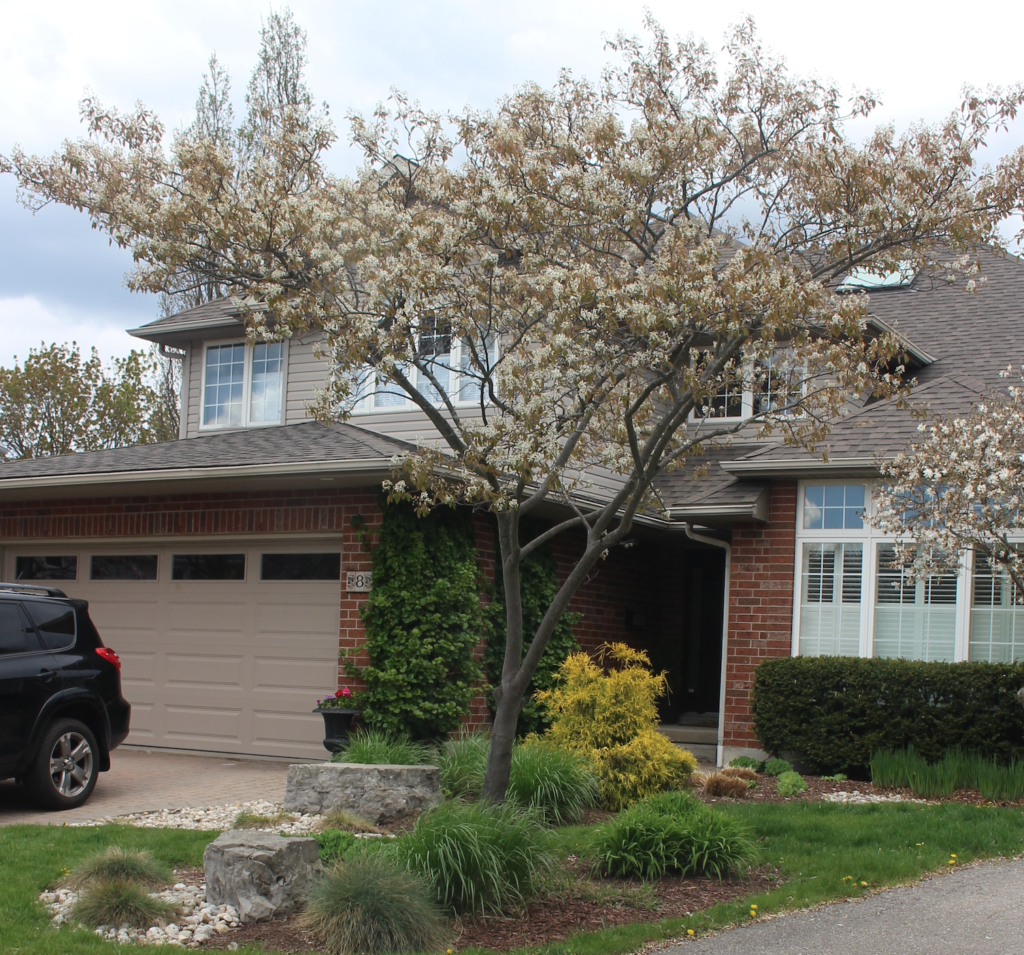By Judy Brisson, for the Puslinch Pioneer, June 2021
Q
My daughter just bought her first home, a townhouse with a small front yard about 5m by 5m. I suggested a lilac but she wants a native tree. Can you recommend a tree?

A
Designing a small garden can be challenging! You will need to consider the mature size of the tree, the sun exposure and soils. Another factor is multi season interest – in a small garden each plant needs to earn its place. A lilac is stunning for two weeks in the spring but has little charm the rest of the year. For a small space, every plant should provide interest for at least three seasons.
Serviceberries (Amelanchier) are excellent plants for small gardens with four seasons of interest. This group of small trees and shrubs all have large, fragrant white flowers in spring, followed by edible berries in June. Their leaves turn yellow orange for fall interest while the gray bark and multistemmed forms will catch your eye in the winter. Native to North America with several species native to Ontario, serviceberry flowers attract pollinators in the spring. The berries will bring Cedar Waxwings, Robins and other fruit eating birds to your garden in June. The berries resemble blueberries and are just as tasty out of hand, in baking or for jam.
Downy Serviceberry (Amelanchier arborea) is the most common species found in garden centres. A multi stemmed shrub, it will grow 3-4 m high with a similar spread. The berries are large and, being less sweet that those of other species are best for jam, jelly or pies. Downy Serviceberry tolerates pollution, will grow in sun or part shade and is suited to most soils.
Allegheny Serviceberry (Amelanchier laevis) is the tallest serviceberry, growing to about 7m with a 4m spread. Also tolerant of pollution, it is less tolerant of drought and may need watering during dry summers. It grows in full sun to part shade. Allegheny Serviceberry fruits are sweet and juicy for eating out of hand. The cultivar Cumulus Serviceberry (Amelanchier laevis ‘Cumulus’) is a smaller selection that grows to a maximum size of 3m high and 2m wide.
A number of named hybrid Serviceberries (Amelanchier x grandiflora) have been developed. The cultivars vary in size, spread, form, autumn colour and flower colour. These hybrid Serviceberries grow in full sun to part shade in average soil. All are small trees and as hybrids, will have fewer berries. If you don’t like a “messy” tree, the hybrids may be for you.
Serviceberries are low maintenance garden plant. They may form root suckers that are easily trimmed in the spring. Cedar Serviceberry Rust disease can be a minor issue and a few insects may cause minor damage. Birds may be a pest if you want to collect the fruit for yourself.
Congratulate your daughter on her new house – perhaps a Serviceberry tree will be the ideal housewarming gift for her.
Judy Brisson
Guelph-Wellington Master Gardeners
